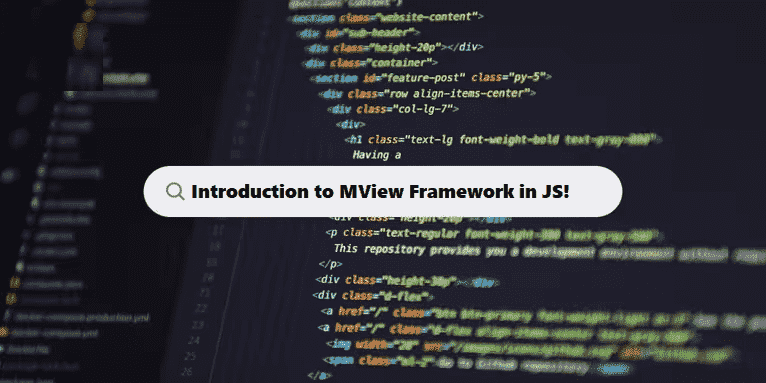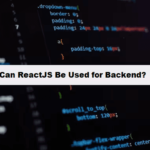MView is a lesser-known but powerful JavaScript framework designed for building modern web applications. Its key features include lightweight architecture, efficient data binding, and minimalistic approach to UI rendering. In this article, we will explore MView in-depth, discussing its structure, features, and how it compares to other popular JavaScript frameworks.
What is MView?
MView is a minimalist, reactive JavaScript framework primarily used for creating dynamic user interfaces. Its core principles focus on simplicity and flexibility, enabling developers to build interactive applications with minimal boilerplate code. MView allows you to manage the view layer of your application with ease, while keeping the codebase small and efficient.
Key Features of MView:
- Lightweight: MView is minimal, and does not include unnecessary features that are often found in other larger frameworks.
- Reactive Data Binding: MView supports two-way data binding, which allows the view to automatically update when the model changes.
- Component-Based: Like other modern frameworks, MView uses a component-based approach, making it easier to manage and reuse code.
- Easy Integration: MView can be integrated into existing projects without requiring a complete overhaul.
Setting Up MView
To get started with MView, you need to include the MView library in your project. It can be included via a CDN or installed via npm.
Option 1: Using CDN
Simply include the following script tag in your HTML file:
#html
<script src="https://cdn.mview.com/mview.min.js"></script>Option 2: Installing via npm
You can install MView via npm by running the following command:
#bash
npm install mviewOnce the library is installed, you can import it into your JavaScript file:
#javascript
import MView from 'mview';Creating Your First MView Component
MView’s core unit is the component, which binds the data model to the view. Let’s create a simple component that displays a message.
Basic Component
#html
<!DOCTYPE html>
<html lang="en">
<head>
<meta charset="UTF-8">
<meta name="viewport" content="width=device-width, initial-scale=1.0">
<title>My First MView App</title>
<script src="https://cdn.mview.com/mview.min.js"></script>
</head>
<body>
<div id="app"></div>
<script>
// Define the component
const MyComponent = {
data() {
return {
message: 'Hello, MView!'
};
},
render() {
return `<h1>${this.message}</h1>`;
}
};
// Initialize the component
const app = new MView({
el: '#app',
components: {
MyComponent
},
template: '<MyComponent />'
});
</script>
</body>
</html>
In this exercise:
- We define a component
MyComponentwith a simple data propertymessage. - The
rendermethod returns HTML markup, which is dynamically rendered with the value ofmessage. - The component is mounted to the
#appelement using the MView instance.
Two-Way Data Binding in MView
One of the primary features of MView is its two-way data binding, which means changes in the data automatically update the view and vice versa. This makes building interactive applications easier and more intuitive.
Two-Way Data Binding
#html #javascript
<!DOCTYPE html>
<html lang="en">
<head>
<meta charset="UTF-8">
<meta name="viewport" content="width=device-width, initial-scale=1.0">
<title>Two-Way Data Binding in MView</title>
<script src="https://cdn.mview.com/mview.min.js"></script>
</head>
<body>
<div id="app"></div>
<script>
// Define the component
const MyComponent = {
data() {
return {
inputText: ''
};
},
render() {
return `
<input type="text" v-model="inputText" />
<p>You typed: ${this.inputText}</p>
`;
}
};
// Initialize the component
const app = new MView({
el: '#app',
components: {
MyComponent
},
template: '<MyComponent />'
});
</script>
</body>
</html>
In this exercise:
- The
inputTextproperty is bound to the input field using thev-modeldirective. - As the user types into the input field, the view updates the displayed text (
You typed: ...). - This two-way data binding ensures that the model and view stay synchronized.
Event Handling in MView
MView provides an easy way to handle events in your components. You can bind methods to events like click, input, and others, making it simple to interact with your UI.
Event Binding
#html
<!DOCTYPE html>
<html lang="en">
<head>
<meta charset="UTF-8">
<meta name="viewport" content="width=device-width, initial-scale=1.0">
<title>Event Binding in MView</title>
<script src="https://cdn.mview.com/mview.min.js"></script>
</head>
<body>
<div id="app"></div>
<script>
// Define the component
const CounterComponent = {
data() {
return {
count: 0
};
},
methods: {
increment() {
this.count++;
}
},
render() {
return `
<button @click="increment">Increment</button>
<p>Count: ${this.count}</p>
`;
}
};
// Initialize the component
const app = new MView({
el: '#app',
components: {
CounterComponent
},
template: '<CounterComponent />'
});
</script>
</body>
</html>
In this exercise:
- We define a
CounterComponentwith acountproperty. - The
incrementmethod increases the count when the button is clicked. - The
@clickdirective binds theincrementmethod to the button’s click event.
Comparison of MView with Other Frameworks
While MView is lightweight and simple, it is important to understand how it compares to other popular JavaScript frameworks like React, Vue.js, and Angular.
1. React
- Learning Curve: React has a steeper learning curve compared to MView.
- Ecosystem: React has a larger ecosystem with more third-party libraries and community support.
- Use Case: React is best for large-scale applications, while MView is ideal for small to medium projects.
2. Vue.js
- Data Binding: Both Vue.js and MView support two-way data binding.
- Complexity: Vue.js has more features and tools (like Vuex for state management), whereas MView is more minimalist.
- Integration: MView is easier to integrate into existing projects because of its lightweight nature.
3. Angular
- Full-Featured: Angular is a full-fledged framework with extensive tooling, whereas MView is a simpler, more focused library for UI development.
- Performance: MView may outperform Angular in smaller projects due to its lightweight structure.
MView is a versatile, lightweight framework suitable for developers who want to quickly build dynamic web applications with minimal overhead. It is especially useful for small-to-medium projects where simplicity and performance are critical. Although it might not have the extensive ecosystem of larger frameworks like React or Angular, MView’s minimalistic approach makes it a great choice for those who want to keep things simple without compromising on functionality.




